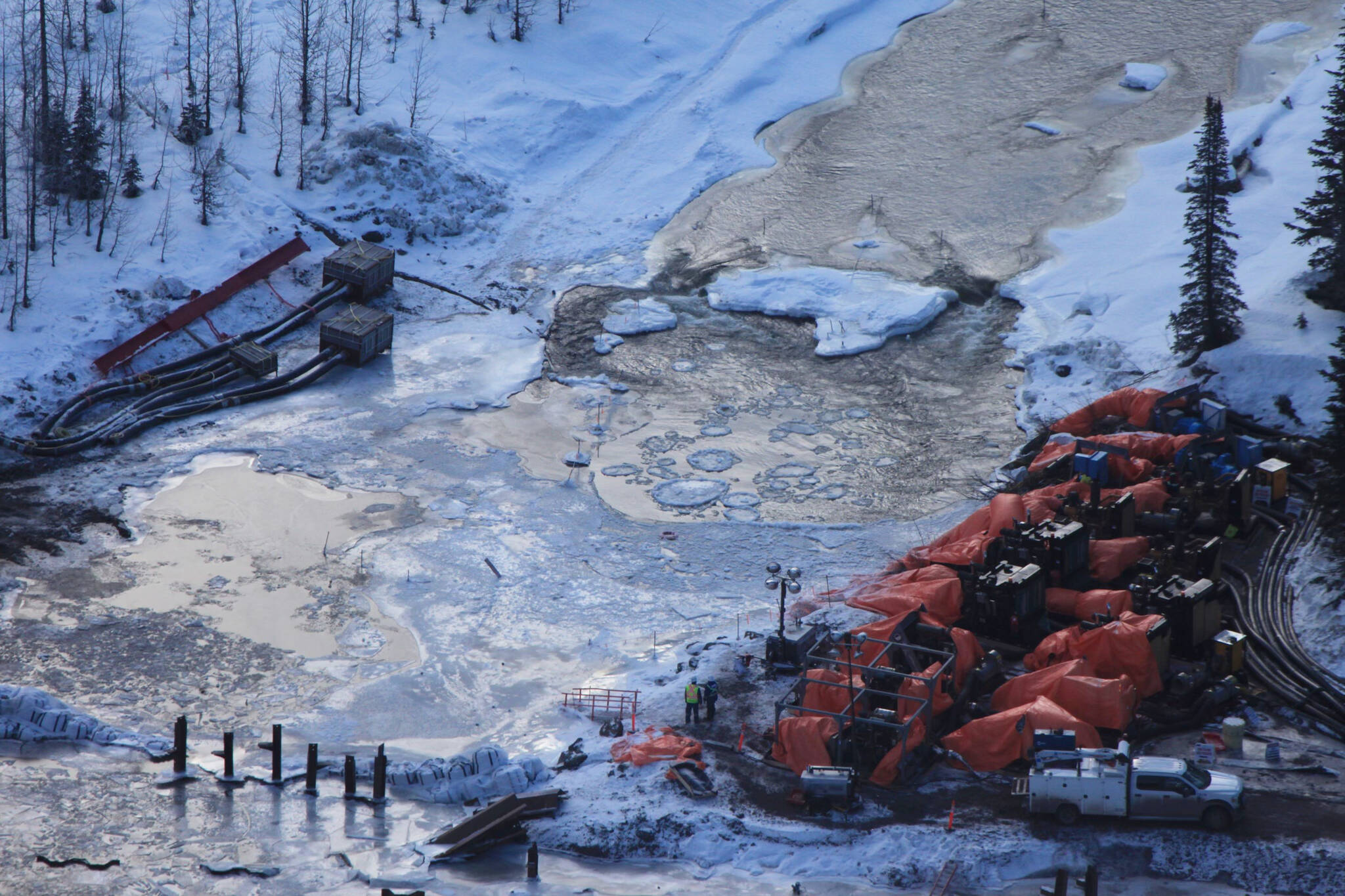Coastal GasLink and those opposing its natural gas pipeline to feed the LNG Canada natural gas liquefaction plant under construction at Kitimat are once again at loggerheads over work underway to cross a river by digging a trench in which to place the pipe.
This time Wet’suwet’en opponents and the David Suzuki Foundation say a dam on the Clore River south and east of Terrace burst Jan. 30 so that the resulting flow swept sediment and debris downstream, damaging fish habitat.
The dam is a part of the works constructed to divert water away from the trenching area and then back into the river downstream.
“Coastal GasLink has lost control of this river crossing, and our fish are paying the price,” said Tsebesa who has the English name of Lillian Wilson. She is the Wet’suwet’en hereditary chief for the territory and made the statement following a Jan. 30 helicopter overflight of the work area.
“Ultimately, I wish they would just pack up and leave.”
The pipeline opponents also say the provincial regulator, the Oil and Gas Commission, and the federal fisheries department need to do more so that workers at the site meet environmental and other standards to protect fish habitat.
They want a stop work order issued until safeguard assurances are put into place.
The Clore River is one of many rivers and water courses being crossed either by tunnelling underneath or by digging trenches along the 670-kilometre pipeline route from northeastern B.C. to Kitimat.
Wet’suwet’en and others first raised the issue of the Clore River works in early January, saying sediment controls were not being followed.
The Clore flows into the Zymoetz River (also known as the Copper River) which then flows into the Skeena. Both the Clore and Zymoetz are prized steelhead rivers.
Coastal GasLink did not respond directly to the allegations of early January or those earlier this week other than to say “qualified environmental inspectors continue to closely monitor the work on-site to ensure appropriate sediment control and flood mitigation measures are in place.”
“At this point, there has been no significant increase in turbidity levels or impact to fish and wildlife. Our team continues to assess site conditions.
“We informed our regulators and are working with them to ensure we continue to meet the high standards of environmental protection British Columbians expect.”
Background information provided indicated that contractors anticipated increased Clore River flows because of warmer temperatures and rainfall, both uncharacteristic for the time of year.
They then stopped work, removed equipment from the riverbed and stopped diverting water so that the flow ran over the dam.
River levels have dropped since Jan. 30 so work has now resumed.
Work in riverbeds is permitted during low flow times of the year, typically during the winter and under strict guidelines.
Coastal GasLink did not provide an expected finishing date for the Clore River work other than to say it expects to be finished this winter within the timing window set by federal fisheries.
The Oil and Gas Commission said it found no problems following the early January allegations and federal fisheries officials say a report of their findings has not been completed.
Federal fisheries officials did say any spawning habitat for salmon or steelhead would be a “minimum of five kilometres downstream” from the work area.
There are also waterfalls approximately 13 kilometres away from the work location acting as a barrier preventing salmon from reaching the location.
The Clore River crossing is the second contentious crossing to come under opposition by Wet’suwet’en protesters. The first was a larger project, now approaching completion, to drill a tunnel under the Morice River south of Houston.
Protesters and others have been arrested at the location and authorities are still looking for those responsible for a Feb. 2022 assault at the Morice River that caused millions of dollars in damage.
rod.link@blackpress.ca
Like us on Facebook and follow us on Twitter

